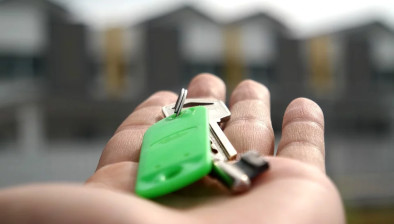ESPC 2017 review finds continued shortage in Edinburgh market
 In their look back at 2017, ESPC found a continued shortage of properties in the Edinburgh market and a sustained increase in selling prices but have yet to see materialise fears that Brexit would have a negative impact on housing.
In their look back at 2017, ESPC found a continued shortage of properties in the Edinburgh market and a sustained increase in selling prices but have yet to see materialise fears that Brexit would have a negative impact on housing.
The average selling price of properties in east central Scotland increased by 6.2 per cent in 2017, when compared with the year before. Similarly, the average selling price in Edinburgh increased by seven per cent to £248,384 year-on-year. However, there were price fluctuations within different areas of the city.
In the first three months of 2017, three bedroom homes in South Queensferry and Dalmeny demonstrated the largest increase in average selling prices, with a 33.4 per cent increase. From April to June, two bedroom flats in Morningside and Merchiston increased by 23.2 per cent. Over the summer months the average selling price of all properties in West Lothian increased by an average of 28.5 per cent, and from August to November, the average selling price of two bedroom flats in the New Town and West End increased by 24.7 per cent.
As with 2016, the property market in 2017 proved to be in favour of the seller, as a shortage of stock resulted in homes selling much faster than in previous years, with an average of 19 days. There was also an increase in properties achieving on or above their Home Report valuation, from 65.6 per cent between October and December of 2016 to 75.1 per cent in 2017. Over the year, the number of homes brought to market decreased by 2.7 per cent, and the number of homes sold in east central Scotland decreased by 3.2 per cent.
Paul Hilton, CEO of ESPC, said: “When reviewing 2017, we can see that a shortage of properties being brought to the market has led to a rise in selling prices, faster selling times and more properties meeting or exceeding their home report valuation.
“As with 2016, we have seen a decrease in the volume of properties for sale, and we believe this could be due to a reluctance to sell in the face of a shortage of properties, as sellers are concerned that they may have difficulties finding a new home. The second home tax, introduced in 2016, has also meant that the three per cent tax on those buying before they sell, has also led to a hesitation for sellers, while the changes to Stamp Duty has also had a slow-down effect on the top-tier properties.
“We are currently seeing a high demand for one and two bedroom flats, and this could be the result of more first time buyers being able to get 95 per cent mortgages and the popularity of buy-to-let properties. These points have all had an effect on the traditional patterns of buying up and replenishing active stock on the market.
“2018 could be a good time to sell property as it could be snapped up quickly and with greater competition at closing dates. Similarly, with favourable mortgage rates, despite the base rate rise, and a relief for first time buyers on the first £175,000 of a property’s purchase, 2018 could be a good year for buying.”





















